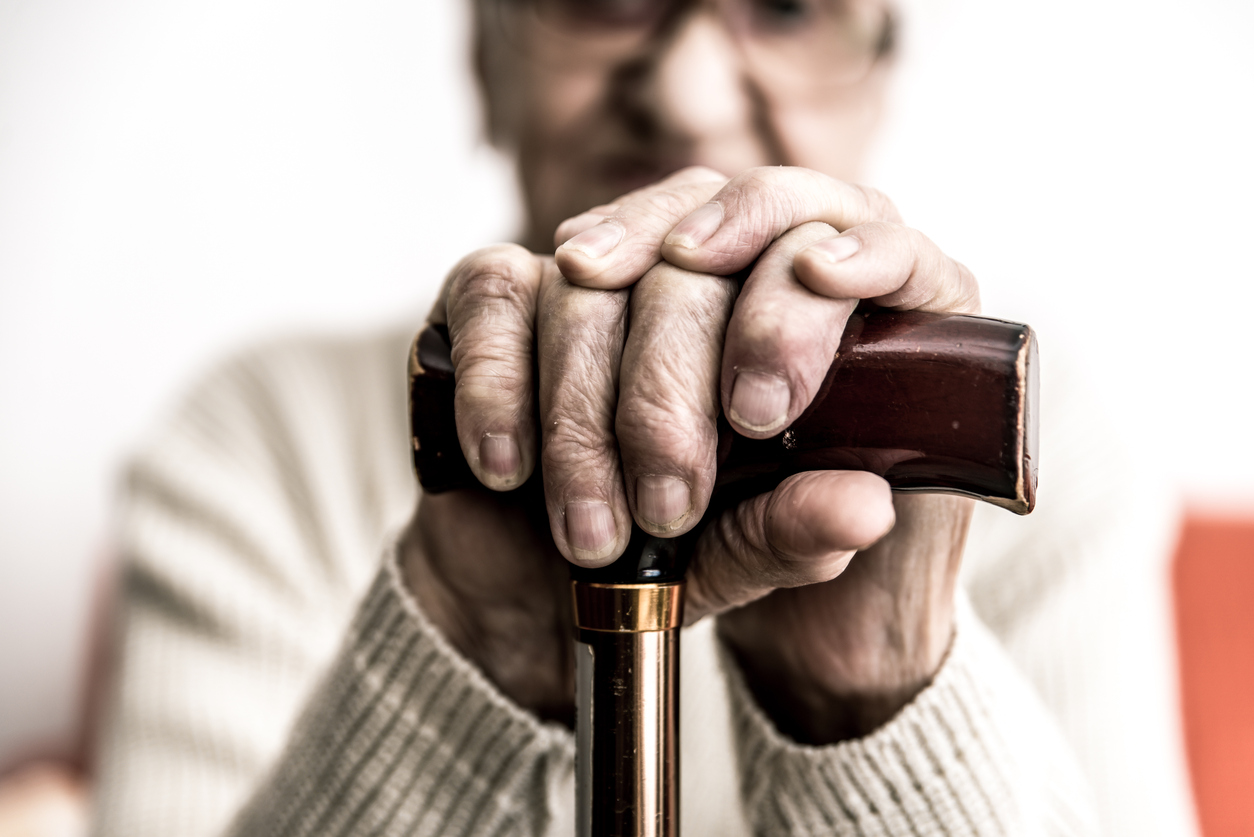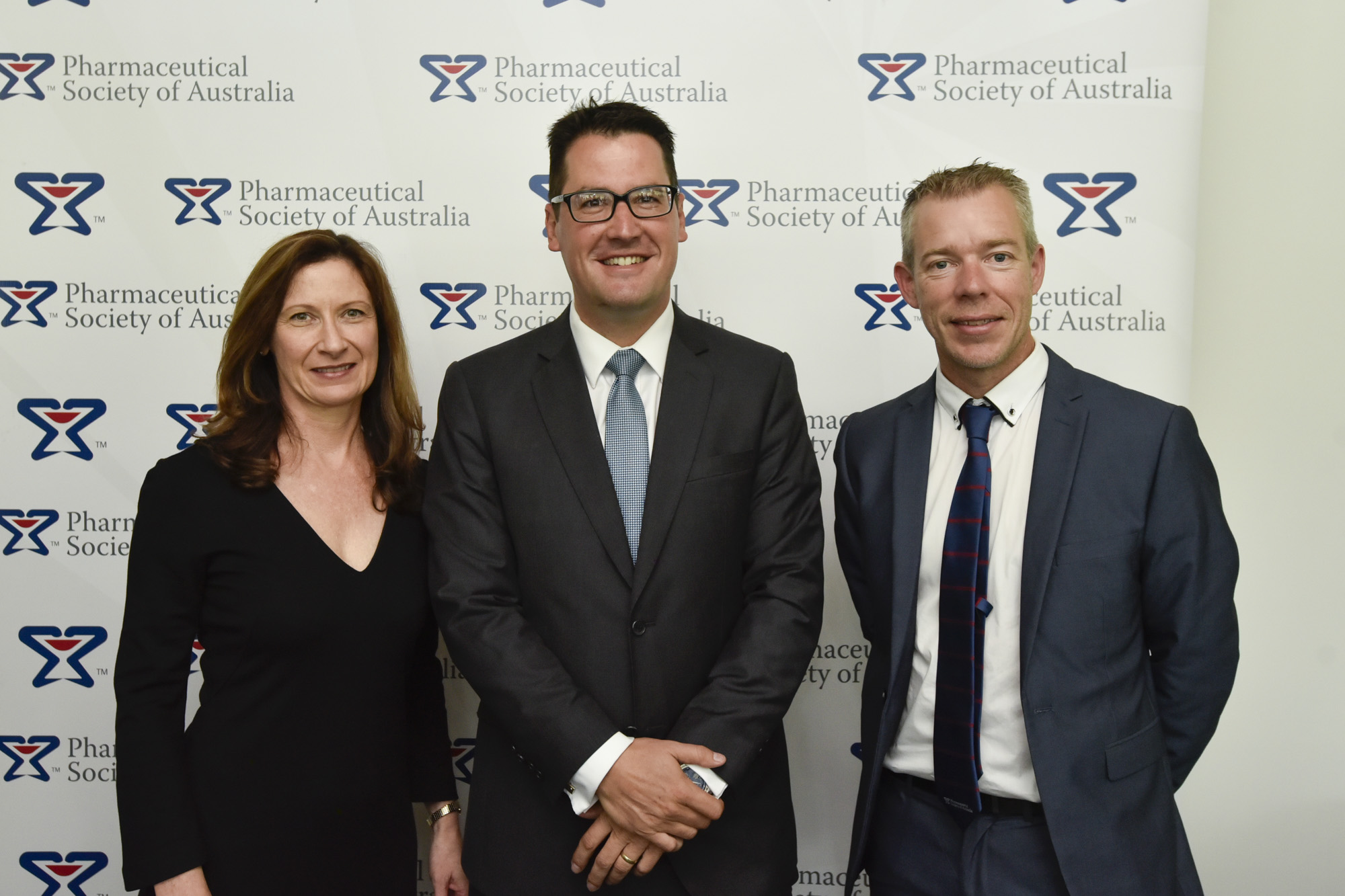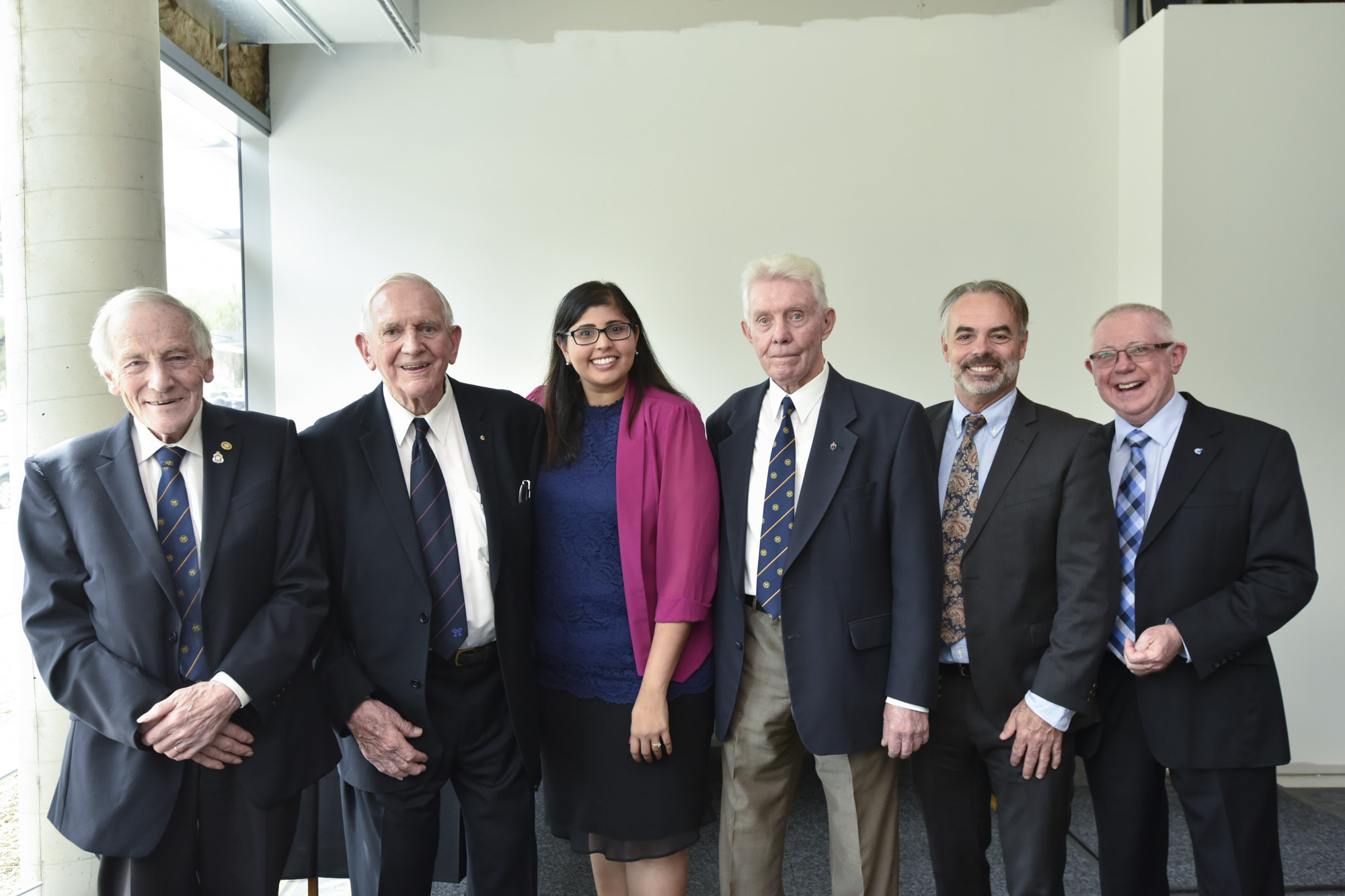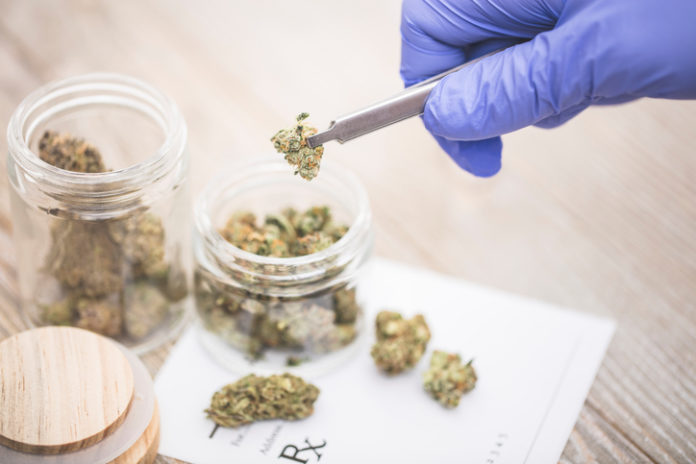In the August 2017 edition of Australian Pharmacist (page 10), I provided background on the regulatory scheme for cultivation and manufacture of medicinal cannabis, import of bulk-sponsored supplies and scheduling of cannabis substances.
This article provides information on patient access schemes, and an update on the progress of Australian work on reviewing clinical efficacy, and the development of clinical guidance documents for the potential use of medicinal cannabis in several major conditions.
Patient access schemes
The Authorised Prescriber scheme is the simplest approach for access to medicinal cannabis products. Following approval by a Human Research Ethics Committee or a relevant specialist clinical college, the medical practitioner becomes an Authorised Prescriber and can prescribe that product for that indication to individual patients in their immediate care without further TGA approval. Clinicians must have training and expertise appropriate for the condition and the proposed use of the product, and be able to best determine the needs of the patient and to monitor the outcome of therapy. From July 2017, medical practitioners are no longer required to submit their clinical justification to TGA as this will already have been approved by an Ethics Committee or endorsed by a college.
The Special Access Scheme (SAS) provides for the import and/or supply of an unapproved therapeutic good for a single patient, on a case-by-case basis. Medicinal cannabis is available through the SAS Category A and B pathways. Category A has recently been permitted as a notification pathway which can only be accessed by medical practitioners for patients who are seriously ill with a condition from which death is reasonably likely to occur within a matter of months, or from which premature death is reasonably likely to occur in the absence of early treatment. Note that under the SAS A notification scheme, state and territory requirements must also be met before prescribing a medicinal cannabis product.
Category B is an application pathway which can be accessed by medical practitioners for patients that do not fit the Category A definition. Since the medicinal cannabis products available do not have an established history of use internationally in the same way that particular registered pharmaceuticals do, they therefore cannot be accessed through the new Category C notification pathway. An approval letter from TGA is required before the good may be accessed under Category B. To apply for approval, a one-page form (with attachments as required) requests information on:
- Patient and clinical justification (patient initials, diagnosis and indication being treated; the seriousness of the condition; details of past treatment and expected benefits from the use of the product)
- Product details (trade name – manufacturer and supplier; dose form; shelf-life and storage conditions and compliance with TGO 93) • Administration details (dosage, route of administration, duration of treatment)
- Details on how the efficacy of the treatment and adverse events will be monitored.
There is not a pre-ordained list of medical conditions; rather TGA will accept each notification and evaluate each application requesting access to a specific medicinal cannabis product on the basis of the supporting evidence submitted.
For privacy reasons, the list of Authorised Prescribers is not made publicly available. Also, in Australia doctors are not allowed to advertise to the public that they are able to prescribe a particular medicine. This is not just a matter relating to the Therapeutic Goods legislation, but also to the standards upheld by the Australian Health Practitioner Regulation Agency and the Medical Board of Australia and goes to matters of medical ethics and good medical practice.
TGA does not charge a fee to process any notification or application to access medicinal cannabis products through the SAS or Authorised Prescriber scheme. A summary of the State and Territory requirements around Schedule 8 and Schedule 4 medicinal cannabis products is provided in Tables 1 and 2 respectively.
Personal import
Medical practitioners can arrange for patient-by-patient importation to fill prescriptions issued using the SAS Cat A pathway. Import by patients e.g. by courier or mail under the TGA Personal Importation scheme requires a local Australian prescription and a Customs (Prohibited Imports) import licence.
The Traveller’s exemption allows travellers or carers travelling with them to hand carry medicines (including medicinal cannabis products) on a ship or aeroplane into Australia. Travellers must have a valid doctor’s prescription, the medicine must remain in its original packaging with its labelling intact and patients can only bring in three months’ supply at the dose that has been prescribed to them. Note that all states and territories have additional requirements about the prescription and possession of schedule 8 medicines (for example, in many cases a local Australian prescription may also be required). There may also be other state and territory requirements around medicinal cannabis products including cannabidiol, so it is important that pharmacists advise individuals who are considering importation in conjunction with international travel to first contact their state or territory health department.
Clinical evidence reviews
With financial support from three state governments and the Commonwealth, the universities of New South Wales, Sydney and Queensland, under the coordination of the National Drug and Alcohol Research Centre are reviewing current evidence on the use of medicinal cannabis products for particular indications. The focus of the review is on the following conditions:
- epilepsy (children and adults)
- palliative care (for control of pain and improving appetite)
- pain (including cancer or AIDS related, neuropathic pain and chronic non-cancer pain)
- nausea and vomiting (cancer or AIDS related)
- multiple sclerosis.
Separate review documents for each of the conditions described above have been prepared. The reports review the level of evidence for those conditions and symptoms for which clinical use could be justified. For each trial reviewed for each condition, an overall grading of the level of evidence has been generated. The summaries of the major trial studies have recently been published on www.tga.gov.au
Evidence has been sought where available on the following to inform clinical practice:
- Benefits and harms from specific cannabinoids, THC/CBD combinations, dose forms and products
- Whether particular cannabis products are more appropriate than others for particular conditions/symptoms
- Description of the dosage forms of the products (e.g. oils, tinctures) and including variation in the route of administration and standardisation
- Dose ranges for which there is evidence, and other pharmacological considerations
- Where in the therapeutic hierarchy does the product sit?
- What review process should be in place to ensure the product is effective for the patient?
- Evidence of adverse events, drug-drug interactions or patient groups for whom the product may pose particular risks.
The reviews provide a shared point of reference on the current evidence on the use of medicinal cannabis products for particular conditions or indications. For clinicians, they will inform decisions about whether to seek permission from governments to prescribe certain medicinal cannabis products for particular indications. The reviews will also contribute to information supporting governments in making decisions about whether such authorisations should be granted. While the outcomes of the work will help inform decision making, decisions on patient access to cannabis products under the care of a medical practitioner will still be made on an individual basis by state and territory government health departments and TGA.
Clinical guidance documents
The evidence generally relied upon by medical professionals to inform the responsible administration of medicinal cannabis therapies is limited. There are more than 60 cannabinoids and the non-standardisation of study designs makes data analysis difficult. After the completion of the evidence review for each condition, draft clinical guidance documents for the use of cannabinoids will be prepared.
Over the second half of 2017, the drafts are being finalised, reviewed and further developed by Australian clinical experts through a process managed and coordinated by the Commonwealth and states and territories. This has involved meetings with clinician and patient Working Groups in Sydney, Melbourne, Brisbane and Adelaide, as well as many teleconferences and email exchanges. The documents are referred to as “Guidances”, and not Clinical Guidelines, as
- they are based on more limited trial data than most clinical guidelines
- rather than provide overall guidelines for the treatment of a particular condition, they focus on the potential use of particular substances (cannabinoids) in a particular condition or group of conditions
- while the guidance document has been subject to peer development and review it has not gone through the formal NHMRC process for the development of clinical guidances.
Consistent with other regulatory guidances, the documents’ primary purpose is explanation and advice rather than mandating any regulatory or other requirements. Decisions on patient access to particular cannabis products will be made by the treating physician and patient with clinical oversight from the state/territory health departments and TGA. It is intended for the Working Groups to meet at least annually to update the Guidance document, until such time as sufficient data on safety and efficacy may be available to enable registration of cannabinoid products by TGA.
Conclusion
There is a strong preparedness to respond to the wish by sections of the community to improve patient access to medicinal cannabis. However, the regulatory system is complex for a number of reasons. Because few cannabis medicines have market authorisation (approval) from regulatory agencies anywhere in the world, for at least the short-medium term, most medicinal cannabis products must be accessed in Australia through the pathways established for unapproved medicines. These pathways are familiar to many prescribers, pharmacists and importers – in the 2015/16 financial year, there were 38,806 SAS A notifications and 19,307 SAS B approvals and 661 Authorised Prescriber medicine approvals. Almost all medicines under these schemes have either been available as registered medicines in other countries for many year or have been recently approved by major regulators. In contrast, there is limited clinical evidence and much less familiarity with medicinal cannabis products.
Secondly, cannabis remains a significant source of income for organised crime and other criminal activities. The controls over production, manufacture and handling of medicinal cannabis products recognise the risk of diversion, and (with the exception of certain cannabidiol products) most are scheduled as S8 controlled drugs. Controls over cultivation and import and export are also in place in recognition of Australia’s commitments under the international narcotics convention. Finally, there are additional state and territory requirements that must be met for these products.
TGA and ODC have developed extensive information on medicinal cannabis products on our websites (www.tga.gov.au, www.odc.gov.au/medicinal-cannabis) and assistance by telephone and email is also available for pharmacists, prescribers, industry and members of the public. ODC can be contacted by email on DCS@health.gov.au. For assistance regarding the cultivation of medicinal cannabis (02 6232 8433), licence/permit applications (02 6232 8648) and other enquiries (02 6232 8740). Similarly TGA has webpages providing information on access to medicinal cannabis products (www.tga.gov.au/access-medicinalcannabis-products-steps-using-access-schemes). Pharmacists and prescribers can telephone 1800 220 007 (or 02 6232 8866), or email medicinal.cannabis@health.gov.au
Table 1. State and Territory regulation of access to Schedule 8 medicinal cannabis
| State/Territory | Can Specialists prescribe? | Can GPs prescribe? | Process |
| ACT | Yes | Yes with specialist support | Specific process |
| QLD – patient class | Yes | No | Specific process |
| QLD – single patient | Yes | Yes | Specific process |
| NSW | Yes | Yes with specialist support | Specific process |
| VIC – Eligible patient (currently children with intractable epilepsy) | Yes | Initial application made by specialist then GP ongoing | Specific process |
| VIC – Exceptional circumstances | Yes | Yes | Specific process |
| VIC – General S8 (imported or non VIC manufacture) | Yes | Yes | Standard S8 process |
| TAS | Yes | No | Specific process |
| SA standard | Yes | Yes with specialist support | Standard S8 process |
| WA – notification | Yes | Initial application made by specialist then GP ongoing | Specific process |
| WA – authorisation | Yes | Yes with specialist support | Specific process |
| NT | Yes | Initial application made by specialist then GP ongoing | Standard S8 |
Table 2. State and Territory regulation of access to S4 medicinal cannabis products (e.g. cannabidiol)
Most states do not have specific/additional requirements, except:
| State/Territory | Can Specialists prescribe? | Can GPs prescribe? | Process |
| QLD – patient class | Yes | Not eligible for this pathway | Specific process |
| QLD – single patient | Yes | Yes | Specific process |
| TAS | Yes | Not eligible to prescribe | Specific process |
| VIC – Eligible patient – Currently children with intractable epilepsy (under Vic legislation) | Yes | Initial application made by specialist then GP ongoing | Specific process |
| VIC – Exceptional circumstances (under Vic legislation) | Yes | Yes | Specific process |
For further information:
ACT: www.health.act.gov.au/public-information/businesses/pharmaceutical-services
NSW: www.health.nsw.gov.au/pharmaceutical/Pages/cannabis-products.aspx
QLD: www.qld.gov.au/health/conditions/all/medicinal-cannabis/index.html
TAS: www.dhhs.tas.gov.au/psbtas
VIC: www2.health.vic.gov.au/public-health/drugs-and-poisons/medicinal-cannabis
WA: ww2.health.wa.gov.au/Articles/A_E/Cannabis-based-products














 PSA Chief Operating Officer Deb Bowden, Senator Zed Seselja and PSA National President Dr Shane Jackson.[/caption]
PSA Chief Operating Officer Deb Bowden, Senator Zed Seselja and PSA National President Dr Shane Jackson.[/caption]





 [post_title] => New Pharmacy House opens
[post_excerpt] =>
[post_status] => publish
[comment_status] => open
[ping_status] => open
[post_password] =>
[post_name] => new-pharmacy-house-opens
[to_ping] =>
[pinged] =>
[post_modified] => 2018-04-05 12:33:52
[post_modified_gmt] => 2018-04-05 02:33:52
[post_content_filtered] =>
[post_parent] => 0
[guid] => http://psa.studionerve.com/?p=1231
[menu_order] => 0
[post_type] => post
[post_mime_type] =>
[comment_count] => 0
[filter] => raw
)
[title_attribute] => New Pharmacy House opens
[title] => New Pharmacy House opens
[href] => http://psa.studionerve.com/new-pharmacy-house-opens/
[module_atts:td_module:private] => Array
(
)
[td_review:protected] => Array
(
)
[is_review:protected] =>
[post_thumb_id:protected] => 1239
)
[post_title] => New Pharmacy House opens
[post_excerpt] =>
[post_status] => publish
[comment_status] => open
[ping_status] => open
[post_password] =>
[post_name] => new-pharmacy-house-opens
[to_ping] =>
[pinged] =>
[post_modified] => 2018-04-05 12:33:52
[post_modified_gmt] => 2018-04-05 02:33:52
[post_content_filtered] =>
[post_parent] => 0
[guid] => http://psa.studionerve.com/?p=1231
[menu_order] => 0
[post_type] => post
[post_mime_type] =>
[comment_count] => 0
[filter] => raw
)
[title_attribute] => New Pharmacy House opens
[title] => New Pharmacy House opens
[href] => http://psa.studionerve.com/new-pharmacy-house-opens/
[module_atts:td_module:private] => Array
(
)
[td_review:protected] => Array
(
)
[is_review:protected] =>
[post_thumb_id:protected] => 1239
)












